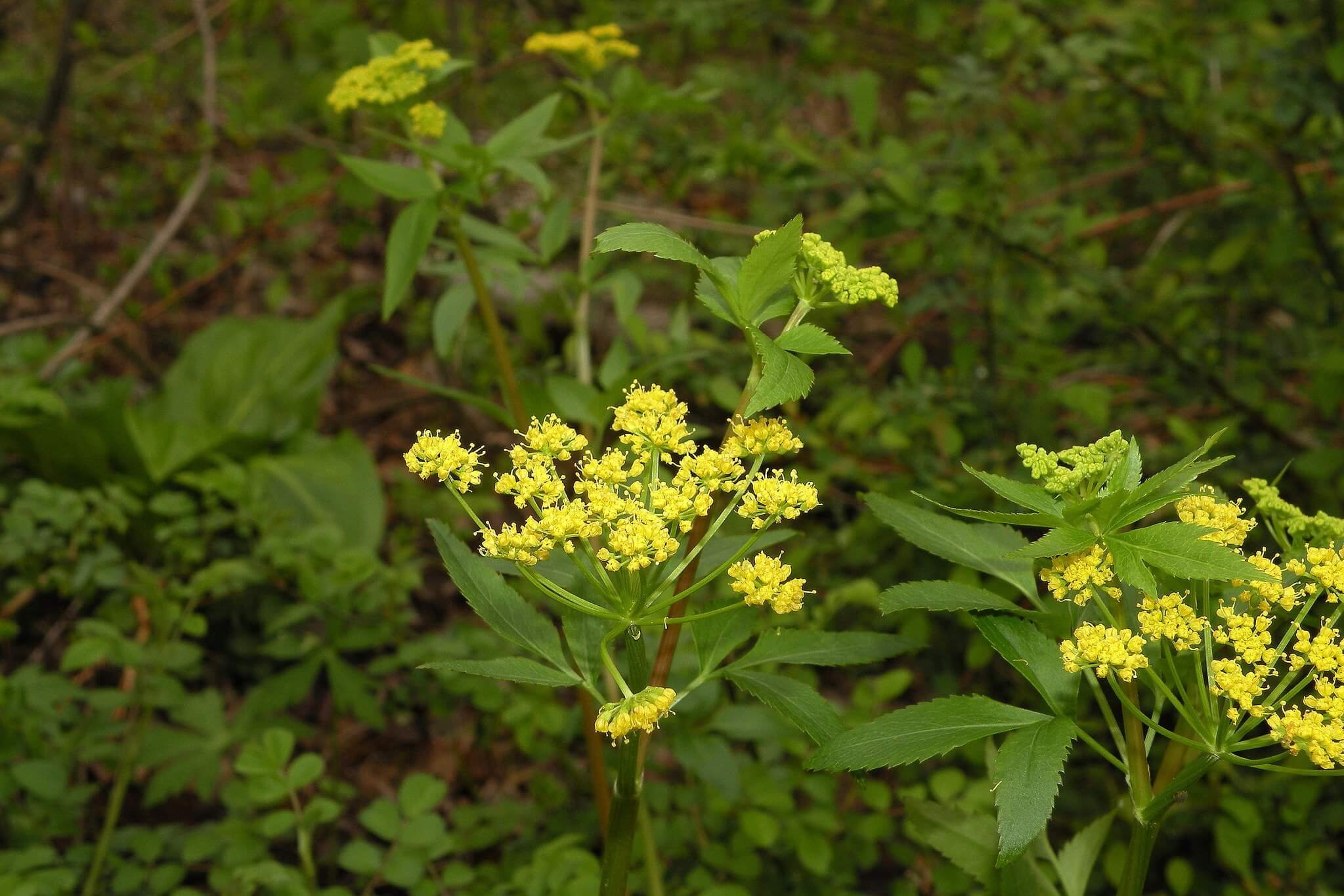 Image 1 of
Image 1 of


Stiff Goldenrod (Oligoneuron rigidum)
The flowers of Stiff Goldenrod attract many native bees and butterflies. Monarch butterflies are especially attracted to its flowers (illinoiswildflowers.info/) and it is recommended as a monarch nectar source by Xerces Society (Xerces.org) as well as the host to an incredible 43 specialist bees (Holm, 2017) (Johnson and Colla, 2023). In addition, Stiff Goldenrod is the host plant for a number of specialist bees (Holm, 2017). It has larger, flatter flower clusters than most Goldenrods and is one of the more attractive of the lot. It can be a prolific self-seeder, thus it may be prudent to remove seed heads before the seed is ripe, especially in small landscapes. However, it has a fibrous root system, so it does not spread rapidly like some of the rhizomatous goldenrods (Holm, 122). I cannot stress how important goldenrods (and other fall bloomers) are on the landscape. They provide food for important pollinators well into the fall when most other plant life is shutting down.
Photo Credit: Matt Levin. Resource Pollinators of Native Plants, by Heather Holm
The flowers of Stiff Goldenrod attract many native bees and butterflies. Monarch butterflies are especially attracted to its flowers (illinoiswildflowers.info/) and it is recommended as a monarch nectar source by Xerces Society (Xerces.org) as well as the host to an incredible 43 specialist bees (Holm, 2017) (Johnson and Colla, 2023). In addition, Stiff Goldenrod is the host plant for a number of specialist bees (Holm, 2017). It has larger, flatter flower clusters than most Goldenrods and is one of the more attractive of the lot. It can be a prolific self-seeder, thus it may be prudent to remove seed heads before the seed is ripe, especially in small landscapes. However, it has a fibrous root system, so it does not spread rapidly like some of the rhizomatous goldenrods (Holm, 122). I cannot stress how important goldenrods (and other fall bloomers) are on the landscape. They provide food for important pollinators well into the fall when most other plant life is shutting down.
Photo Credit: Matt Levin. Resource Pollinators of Native Plants, by Heather Holm
The flowers of Stiff Goldenrod attract many native bees and butterflies. Monarch butterflies are especially attracted to its flowers (illinoiswildflowers.info/) and it is recommended as a monarch nectar source by Xerces Society (Xerces.org) as well as the host to an incredible 43 specialist bees (Holm, 2017) (Johnson and Colla, 2023). In addition, Stiff Goldenrod is the host plant for a number of specialist bees (Holm, 2017). It has larger, flatter flower clusters than most Goldenrods and is one of the more attractive of the lot. It can be a prolific self-seeder, thus it may be prudent to remove seed heads before the seed is ripe, especially in small landscapes. However, it has a fibrous root system, so it does not spread rapidly like some of the rhizomatous goldenrods (Holm, 122). I cannot stress how important goldenrods (and other fall bloomers) are on the landscape. They provide food for important pollinators well into the fall when most other plant life is shutting down.
Photo Credit: Matt Levin. Resource Pollinators of Native Plants, by Heather Holm
Life Cycle: Perennial
Sun Exposure: Full, Partial
Soil Moisture: Medium-wet, Medium, Medium-dry, Dry
Height: 4 feet
Plant Spacing: 1-2 feet
Bloom Time: August- October
Bloom Color: Yellow
Advantages: Pollinator Favorite, Bird Favorite, Recommended but vigorous
Host Plant: 2 species of butterflies and moths use this as a caterpillar host plant in our area (nwf.org)
Specialist Bee: Specialist Bee: Andrena aliciae, A. apacheorum, A. asteris, A. braccata, A. canadensis, A. Chromotricha, A. hirticincta, A. nubecula, A. placata, A. simplex, Perdita octomaculata, P. swenki, Pseudopanurgis aestivalis, P. andrenoides, P. compositarum, P. labrosiformis, P. solidaginis, Melissodes agilis, M. boltoniae, M. coloradensis, M. coreopsis, M. dentiventris, M. druriellus, M. fumosus, M. illatus, M. menuachus, M. microstictus, M. niveus, M. trinodis, M. wheeleri, Colletes americanus, C. compactus, C. rufocinctus, C. simulans, C. solidaginis, C. speculiferus, Dieunomia heteropoda, Dianthidium simile, Dufourea marginata, Megachile inimical, M. parallela, M. xylocopoides, and Ashmeadiella bucconis (Holm, 2017) (Johnson and Colla, 2023)
Resource: Holm, Heather. Bees: An Identification and Native Plant Forage Guide. Pollination Press LLC, 2017
Resource: Johnson, Lorraine, and Sheila Colla. A Northern Gardener’s Guide to Native Plants and Pollinators: Creating Habitat in the Northeast, Great Lakes, and Upper Midwest. Island Press, 2023






